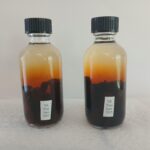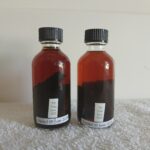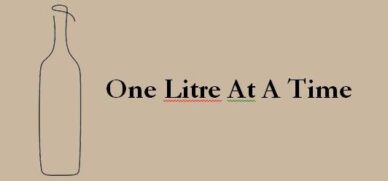The biggest (and most expensive) question: Which grade of vanilla beans to use?
Grade A beans were used initially for no real reason other than that’s what was chosen to purchase the first time around. But the cost difference between Grade A and Grade B keeps inviting a reevaluation and a continued search for additional information. Eventually, the decision was made to move to using Grade B for two reasons:
- They are specifically marketed “for vanilla extract”.
- They are lighter due to having less moisture content. Since we are choosing the amount of beans by weight, lighter beans means a higher number of pods for the same weight.
However, as there are probably more factors that go into choosing Grade A vs Grade B, an experiment needs to be conducted to ensure this is the case.
Method

For this experiment, only one variable will be changed. Two identical bottles of vanilla extract will be made using the same type of bottle, the same alcohol, store them together through the aging process, shake them at the same time, and the only difference will be whether the beans included are Grade A or Grade B. At the end of three months (September, 2025), the two extracts will be compared with a method yet to be determined. These tests will continue for as long as possible.
Note: At the time these were created, Titul Vodka was the brand on hand. This is probably not a good choice. The actual brand and quality experiment is coming up later, so this may be a wasted experiment.
Execution

Two-ounce glass bottles were procured from Amazon. Both the A and B bottles were made with Titul Vodka from the same big bottle. 0.25 ounces (approximately 7.5 grams) of Grade A vanilla bean pods were split open, cut into small enough pieces to lay flat across the bottom of the bottle, dropped into the “VA” bottle, and the bottle was topped off with Titul Vodka. The same quantity of Grade B vanilla bean pods were split, cut, placed into another two-ounce bottle, and the bottle was topped off from the same Titul Vodka bottle.
Results
At this point, the extraction process is doing its magic. The bottles were created on 09 June. The first picture was taken on 19 June, nearly two weeks into the process. There is no significant difference between the two bottles. The second was taken on 04 July, the end of the third week. Apparently, both bottles continue to progress at the same pace.
This is an ongoing experiment, so the results will continue to be updated.




